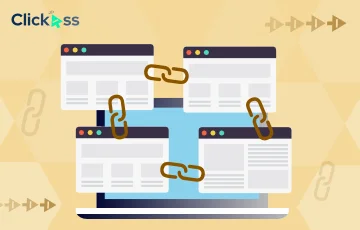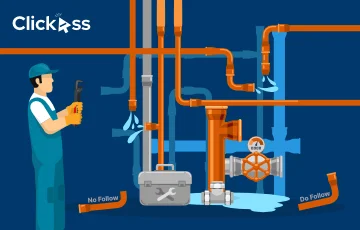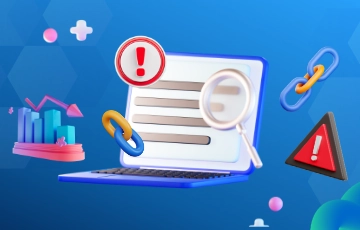
Search engine positioning is not something that happens overnight. Most companies think they can use a search engine optimization strategy to improve their search engine ranking position and expect to be at the top of search engine ranking reports within a couple of weeks.
If you could learn to leverage certain aspects of your website, blog, and social media accounts, you could effortlessly reach the top of the search results. What would a better ranking mean for your business? A whole new world of customers on autopilot.
You’ve probably heard that you need to rank on page one of Google if you want to drive in new leads. While there is a lot of truth to that statement, it’s not quite as simple as that. Let me introduce you to 8 powerful SEO tips and tricks which will skyrocket your search engine positioning and improve your overall website performance.
8 Tips To Skyrocket Your Search Engine Placement
We’ve all come across those companies that seemingly go from zero to hero within a short time. How do they do it? Well, in this blog post, we’ll lay out 8 SEO strategies, tactics, and best practice tips that will help you skyrocket your search engine placement!
1. Optimise the Website for Appearance in the “Featured Snippet” Section
The Featured Snippet is a box that appears at the top of search engine results pages (SERPs) that displays a direct answer to a question or answer. This snippet can be an entire paragraph including links or shorter with just one or two sentences.
The best way to increase your chances of appearing in this section is to optimize your website for it. They provide a quick summary of your content in the search results, displaying a few lines of text and an image from your website.
Featured snippets are more than just a search engine positioning strategy; they’re also a UX best practice. They help users find what they want quickly, which makes them more likely to stick around on your site and engage with it further.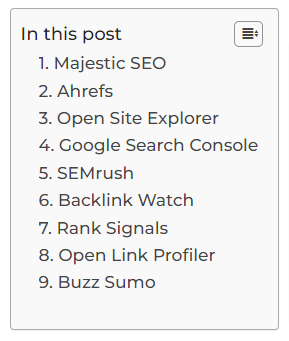 Source
Source
As seen above, the bulleted list featured snippet is an excellent example. One of my favourite examples of how to use featured snippets comes from Codefuel. When you search for ‘backlink checker tools’ on Google, the first article from Codefuel that appears in the first position showcases the featured snippet in the best way possible, as seen below:
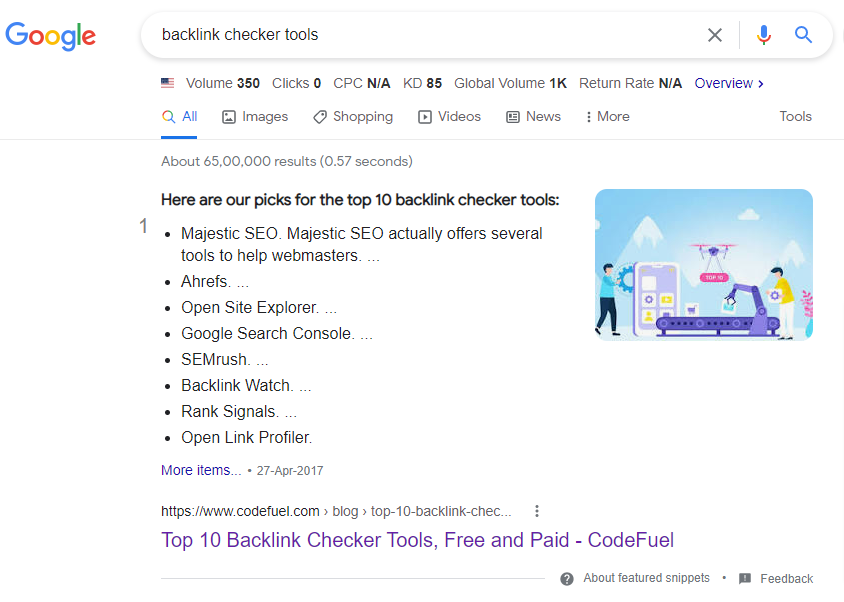
The headline is short, sweet and to the point. It tells you exactly what to expect and why you should click through: “The top 10 backlink checker tools, free and paid”.
The featured snippet expands on this point further. The information in this box is taken directly from the page, containing all the necessary information to help someone make an informed decision about whether or not the product or service is right for them. It gives some context to what’s being covered in the post but doesn’t get too detailed not to confuse or overwhelm people still browsing through their results.
Hence, every time someone types a question regarding backlink checker tools into Google, there’s an opportunity for Codefuel to show up in their search results with a unique answer that stands out from all other results by providing relevant information to their query.
2. Select the Right Keywords
Keywords are words and phrases that people search for when looking for what you have to offer. The more specific your keywords are concerning what you’re selling, the better your chance of being found.
Search engines use algorithms and search engine positioning software to determine the most relevant websites for a given keyword query. When someone searches for “organic tea,” for example, Google will look at the text on your page and decide if it’s relevant to the user’s query. If it isn’t, Google will show relevant results instead. Here’s how to select the best keywords:
Identify common phrases people use when they’re looking for information related to your business or industry (for example, “organic tea” or “vegan ice cream”). These are called long-tail keywords because they’re more specific than short-tail keywords like “tea” or “ice cream.” Long-tail keywords tend to convert better because they’re more accurate descriptions of what consumers want; thus, you’ll get more qualified traffic from them than from broad terms.
The most important thing you need to remember about keywords is that humans don’t just use them; they’re also used by search engines like Google (and Bing). So if you’re looking for a way to improve your search engine ranking position, start by using keywords with high search volume but low competition (meaning there aren’t many other websites using those exact terms).
You can use search engine positioning tools like Semrush, which can work wonders for your website. The best way to do this is by conducting keyword research before building a site or making significant changes.
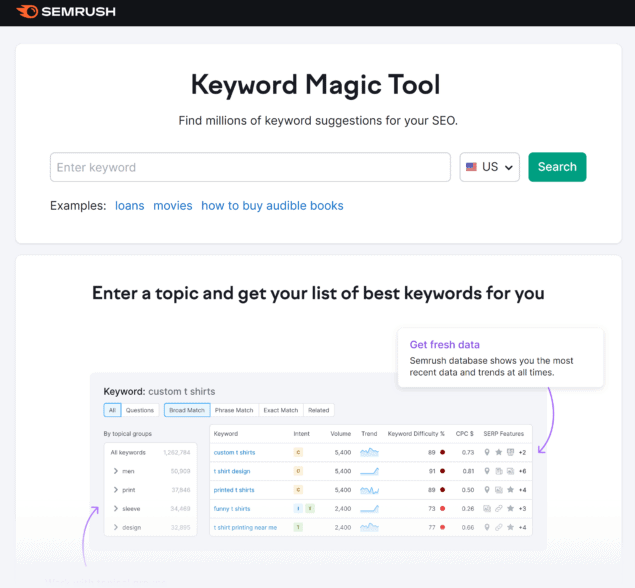
3. Deploy an Internal Link Building Strategy
Internal linking is the process of creating a set of internal links that point from one page on your site to another page on your site, usually from an existing page to a new page. The idea behind it is that search engines recognize pages on your site as more relevant if they are linked together.
The first rule of thumb is using specific, relevant, contextual anchor texts. You should avoid generic terms like “click here” or “learn more” and use keywords instead. The search engines will understand your page better based on how it relates to other pages on your website, which increases its ranking potential.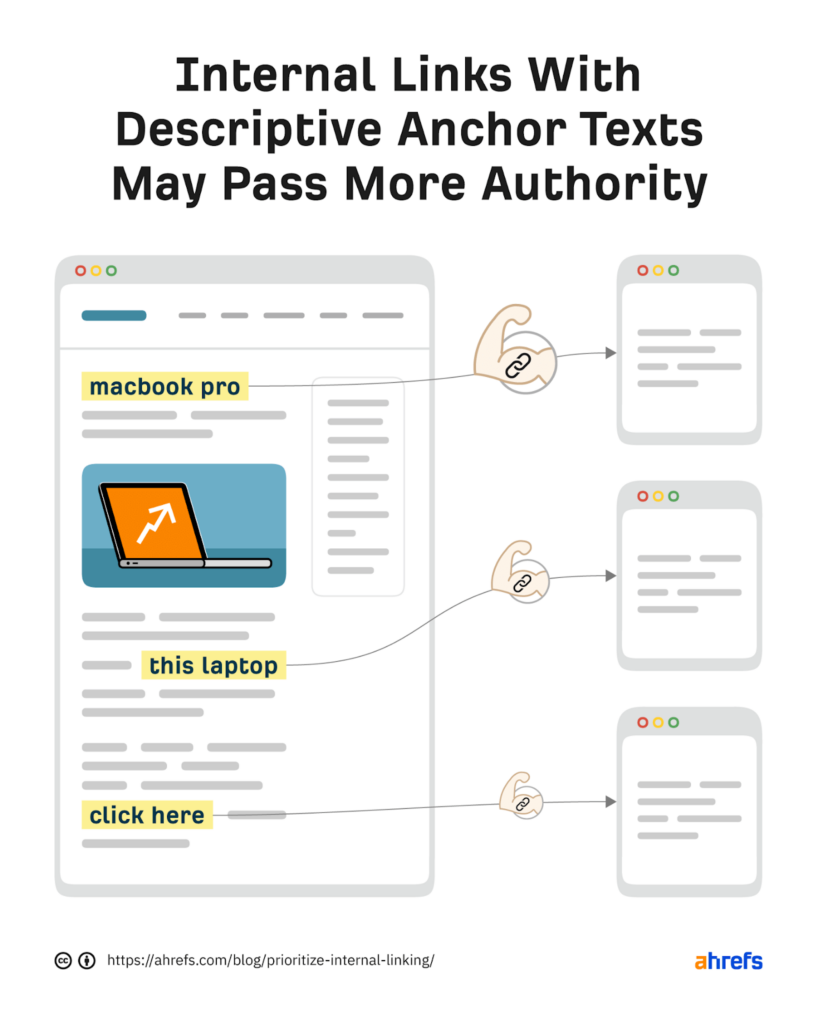 Source
Source
The anchor text is a clickable word or phrase in hyperlinks that point to other web pages or online resources (e.g., “Best Laptops”). In general, it’s best to use keyword-rich anchor texts when linking between pages within your website rather than linking to external websites or resources.
For example, Suppose you’re writing about how your company uses social media marketing. In that case, you might include links with anchor text like “social media marketing” and “how we use social media marketing.” This helps Google know what your site is about and gives it more context to better understand what search terms people use when looking for information about your business.
4. Re-optimise Your Existing Content
You should re-optimise your existing content to stay up-to-date and relevant to your target keywords. If you want to get the most out of your existing content, use search engine positioning software such as ScreamingFrog or SEMRush to check how often certain words appear on each page and how they are linked to other pages on your site. This will help you identify gaps in your content and determine what new keywords you should include in future updates.
If your site is more than a year old, it’s likely you’ve lost some of the ranking power you had when it was first published. You can easily re-optimize that content by following Google’s guidelines for improving page speed and mobile friendliness. This will also help you improve user experience and increase conversion rates.
The primary purpose of a website is to get people to click through to your business and make purchases. The best way to do this is by optimizing your website for search engines and improving your search engine ranking position in the search results pages (SERPs).
The more targeted keywords you use, the higher your rank will be in search results. This can help boost traffic because people will see your website as relevant for their search query. If the user clicks on your website, they can find what they want quickly (because of its relevance).
Re-optimizing existing content is one of the fastest ways to improve your rankings because it doesn’t require much effort beyond updating the content itself (which should be done regularly anyway).
5. Improve the Domain’s Core Web Vitals Score
The first step is ensuring your domain has a high core web vitals score. This is crucial in determining how well your site will rank on Google and other search engines. A good score can help you get higher rankings and search engine positioning improvement, while a bad score can hurt your ranking.
This is the primary metric that Google uses to determine how well your site is built and optimized, and it’s a critical factor in determining how well you rank. This includes high domain authority, good backlinks, and so on. The higher these scores, the better your website’s overall rankings are.
The age of a domain is an essential factor in determining its ranking because older sites are more likely to be trusted. Google has used this for years, but other search engines are now following suit.
Trust flow can be thought of as the “credibility” of your site, so it’s no surprise that it significantly influences search engine rankings. Trust flow measures how much trust Google has in your website from links from other sites (and vice versa) based on link signals such as no follows and anchor text quality. The higher your trust flow, the better placed you are for rankings.
6. Update Meta Tags and Descriptions for Top Vital Phrases
Search engines use meta tags to determine content relevancy and make ranking decisions. You can optimize your meta tags by naturally using relevant keywords that humans easily read.
Search engines use meta tags and descriptions to display content on their search pages, so make sure they accurately describe what people will see when they click through. Update these elements regularly to reflect changes in your website content, such as new product offerings or additional services you offer.
If your meta tags don’t match up with your site’s content or are too long, you might consider making some changes. The meta description is fundamental because it’s what shows up in the results list on search engine results pages (SERPs).
For example, if you run a local business and want to rank as the “best pizza shop”, you’ll want to ensure that your website has a meta description that includes those keywords: “Best Pizza Shop – We’ve got the best pizza in town.”
7. Start Experimenting with New Content Formats and Ideas
Google has said that it wants sites that provide unique and valuable content, so why not try something new? Experimenting with different formats and ideas will help you find the type of material that attracts visitors, giving Google more reasons to rank your site higher which results in search engine positioning improvement.
If you want to stay ahead of the curve, ensure you’re constantly testing new content formats and ideas on your site to improve search engine position analysis. This could mean creating videos or podcasts instead of just writing blog posts or articles, adding infographics that illustrate complex concepts, or even creating interactive quizzes or games that people can play for fun.
For example, you can use the Hub & Spoke Content format where you have one central topic that several smaller ones surround. A hub page is a single page that has links to other pages on your website (which are spokes).
Hub pages are typically homepages, landing pages or category pages — any page visitors will see before navigating more profound into your site. Hub pages serve two primary purposes: They simplify navigation for users who don’t know where they want to go yet and make it easier for search engines like Google to find all the content on your site related to a specific topic.
Apart from this, the “Topic Gateway” is another content format within which content marketer can easily place all the related resources of the main topic.
Drift Chatbot brilliantly showcases this engaging content format, providing more value for users and helping them find what they need faster.
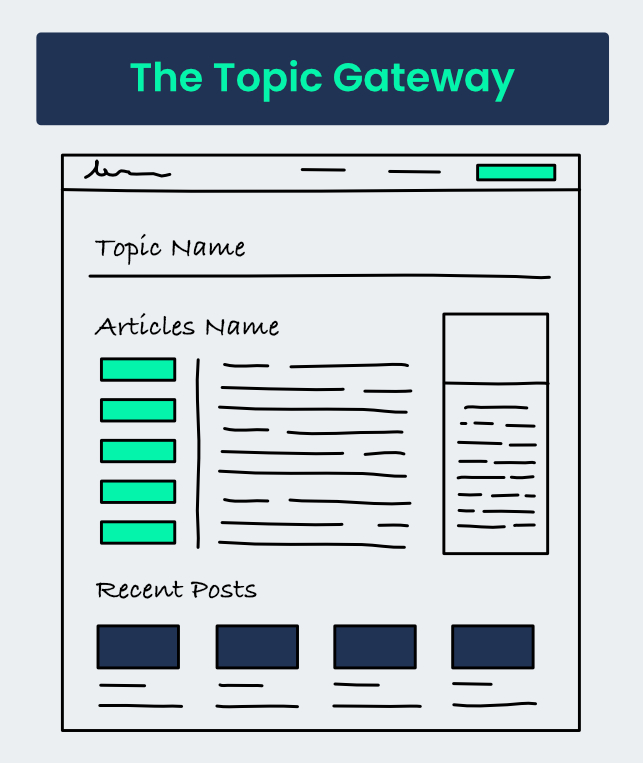
It reduces duplicate content issues by using canonical links and HTML sitemaps to ensure all variations of your site structure are included in search engine indexes (and categorized correctly).
8. Start Focusing on Creating “Contextual Backlinks”
The first thing to do is to stop focusing on the number of links and start focusing on the quality. You can still get plenty of links, but you must take a more strategic approach. Start focusing your efforts on creating “contextual backlinks”.
These type of links comes from a website that is relevant to yours, such as a blog post or news article. It’s also known as a natural link because it appears naturally on the web page and isn’t forced. They point to your website from other websites with relevant content for the keywords you are trying to rank for. Source
Source
Google has been very clear about its preference for websites focused on a specific topic or niche. That’s why it recommends that you build content around a particular topic or theme instead of trying to rank for multiple different keywords across different niches.
For example, with consistent efforts in using contextual backlinks and an organic-looking anchor- ‘Games are natural stress relievers‘, Solitaire as the brand name was mentioned within their text and hence, increased the visibility of getting noticed by the search engine.
Hence, build links from reputable websites that have a similar audience or purpose as yours. A link from an authoritative source is more likely than not to be followed by other webmasters who then include similar links in their content — which passes link juice along with it!
4 Hand-picked Search Engine Position Check Tools
Hundreds of search engine positioning tools help you with everything from keyword research, backlinks analysis, and competitor analysis. In this article, I’ve picked four free search engine position analysis tools that we think will be useful for marketers and business owners.
1. Google Search Console
Google search console is a free service offered by Google to help you monitor your websites and check the position of your web pages in the search results. The tool provides valuable information about your website’s visibility, including data on top pages, mobile usability, indexing problems, links, and more.
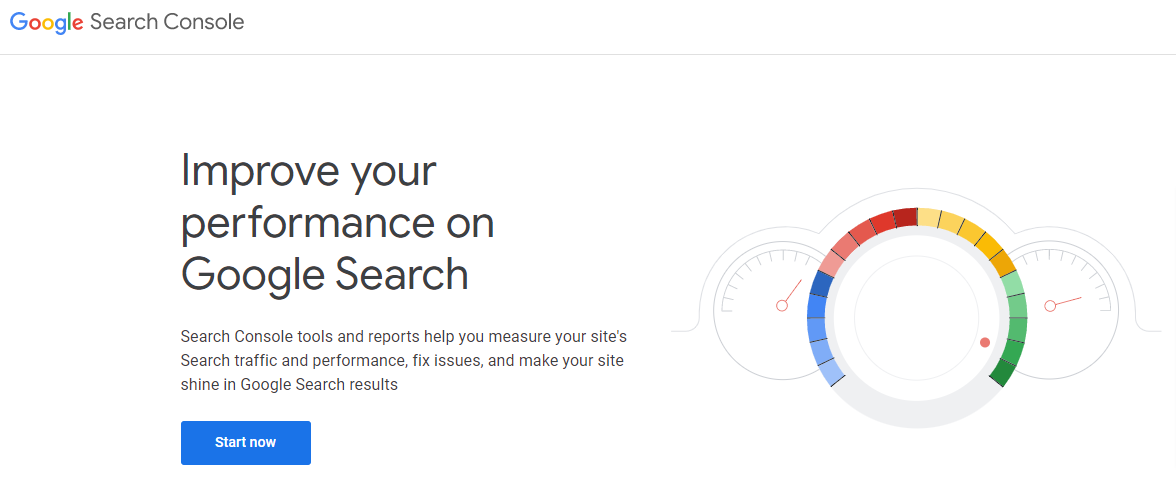
The primary purpose of the Google search console is to provide insights into how Google sees your website so that you can make changes that will improve its performance in the SERPs. It also offers other useful features like tracking keywords, analyzing traffic sources and monitoring uptime.
Features:
- See how your site appears in Google’s index (crawl)
- Get insights into which keywords drive organic traffic to your site
- See how pages on your site rank for specific keywords in Google Search results
- Understand how visitors engage with your pages after they land on your site
- See how often others share links to your content, including social media sites
Benefits:
- You can set up a more effective SEO strategy and get closer to ranking your site
- Identify and manage matching indexable items can take your search visibility to the next level.
- Test new variations of landing pages, implement new strategies and make immediate changes.
Pricing: Google Search Console is a free-to-use tool available online.
2. Serpstat
Serpstat is one of the most popular SEO tools currently on the market. It has many features and functionalities that make it easy to find out how well your website ranks in search engines. The tool offers a free version as well as paid versions.

It also has a backlink analysis feature that can help you determine how well your website is doing when building backlinks.
Features:
- Check your rankings, identify your competitors and monitor your rankings over time
- Backlink analysis helps you determine how well your website is doing when building backlinks
- Offers an organic traffic report which shows you the number of visitors coming from Google Search over time and the traffic sources for each month of the year
Benefits:
- The interface is clean and straightforward, so it’s easy for both beginners and more experienced SEOs to use this tool effectively
- Grow your organic traffic to increase sales and customer engagement
- Save time with this great tool
- Get a complete picture of your website’s organic traffic in Google Search over time
Pricing:
Four packages are available: Lite, Standard, Advanced and Enterprise. You can also contact their team for a customized quote.
3. Seobility
Seobility helps you find the search engine position of a website, a URL or a keyword.
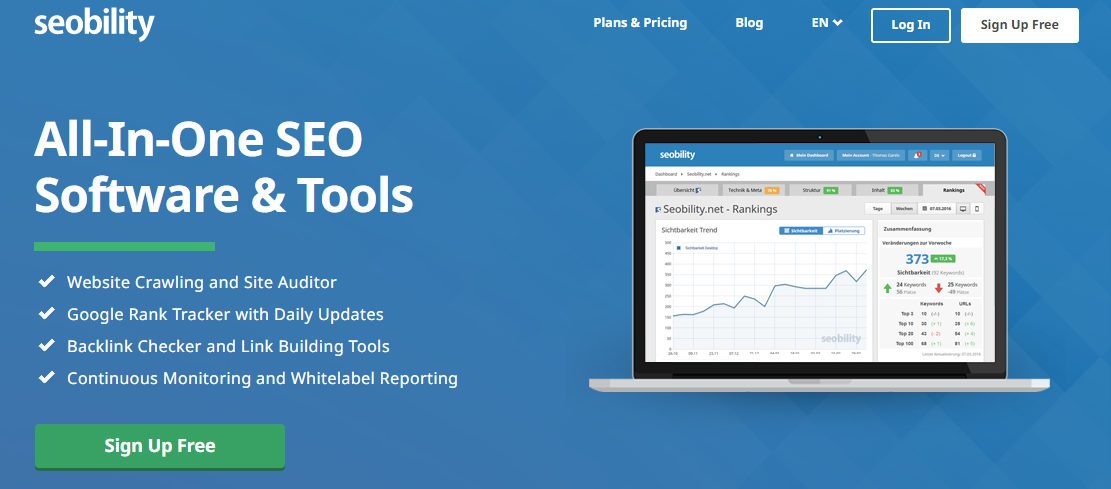
The tool provides helpful insights into your site’s performance in search engines. It has many features that are useful for SEO specialists.
Features:
- Check your website’s search engine ranking, which means you will be able to see how well your website is doing on Google, Bing, and Yahoo
- View your competitors’ websites, rankings, and backlinks
- Enter a keyword or URL to get instant results
- Find out your site’s search engine ranking and get insights into your site performance
Benefits:
- You can learn where your competitors are getting their backlinks from and whether or not these sources are good for you to use
- It gives you a lot of information about your website’s performance in the search engines, including rankings across multiple platforms (Google, Bing, and Yahoo), keyword data, social media analysis, and more
- Check back in 2-3 weeks and see if you’re improving and ranking better in Google’s search results.
- This is great for any online business
Pricing:
Three packages are available: Basic (Free), Premium and Agency. It is an online tool with a free version and advanced features applicable with a 30-day trial period.
4. Ahrefs
It is a tool that lets you know the current position of your site in search engines. It is easy to use and has various features that enable you to track your website’s rankings and keyword positions.

This tool can be used by anyone who wants to manage many websites or just one. It is also beneficial for monitoring your competitors’ performance. In addition to its excellent keyword research tool, Ahrefs offers other valuable features such as backlink analysis for your competitors, page analysis for any website, keyword difficulty score, and SERP overview for any keyword.
Features:
- It can be used by anyone who wants to manage many websites or just one
- In addition to its excellent keyword research tool, Ahrefs offers a wide range of valuable features
- Backlink analysis for your competitors, page analysis for any website, keyword difficulty score, and SERP overview for any keyword
- You can find popular keywords in your niche, which is important when creating content to rank high in these searches
Benefits:
- It’s beneficial for monitoring your competitors’ performance
- Ahrefs has a comprehensive set of tools that enable you to optimize your website to rank higher in search engine results pages (SERPs)
- The tool also provides insights into how people find your site and what they do when they get there
- The user interface is not very intuitive, and it takes time to get familiar with it. But once you do, it becomes easier to use this tool’s features
Pricing:
Four packages are available: Lite, Standard, Advanced and Enterprise. Depending upon your needs and preferences, you can decide on which package is needed.
Conclusion
Now, we know how crucial it is to improve your search engine positioning. And with the right approach, you can automate your lead generation, link building & target any of the content lifecycle funnels. Followed by eight insane tips to kickstart your search engine booster strategy. We also talked about some specific on-page SEO elements.
You may read and ask, “Okay, Dhruv! You told us all tasks to implement but now tell us, how do we do it?” To answer this, we have also covered four hand-picked tools along with their features, benefits & pricing.
What tool are you using these days or planning to start your journey from?
Frequently Asked Questions (FAQs)
What is search engine positioning?
Search engine positioning is the process of influencing how a website appears in organic search results. This can be done by improving the quality of the website, increasing its relevance to search terms, and using other techniques.
Why is search engine positioning important?
It can help you gain more customers and clients. These days, most people go online when they want to buy something or find information about a particular topic. If they type in a keyword phrase that has to do with what you provide, your site will show up at the top of their results page. If they don’t find what they’re looking for, they might look further down on the page or even leave altogether.
How do I find the position of my website in a SERP?
There are two ways to find the position of your website in a SERP:
- Use your tools- If you’re working with a web admin, they will be able to tell you where your site ranks on Google’s search results page. It’s important to note that this is only for one specific keyword and does not show any other keywords that rank for that exact search term.
- Google Search Console (GSC)- To get more information about how your website appears in Google’s search results, leverage GSC to see if your site has any errors or warnings. The search engine ranking reports from this tool share data about which keywords are driving traffic to your site.
About The Author
Dhruv Mehta
Dhruv Mehta specializes in SaaS CRM, solving link-buying challenges with high-quality, bottom-of-the-funnel links through hyper-personalized outreach. He’s also passionate about sharing tried-and-tested, easy-to-implement SaaS SEO and link-building insights on LinkedIn. Currently, he's on a mission to build 45 SaaS backlinks in 45 days.
Table of Contents
ToggleRelated Posts
SaaS Link Building Playbook for Faster SEO Wins
How to Choose the Right White Label Link Building Partner for Your SaaS SEO Agency
Forum Backlinks in 2025: Strategy, Risks & Truth
13 Cold Email Tweaks That Improved Backlink Outreach (Backed by Experts)
Domain Rating vs Domain Authority – What SEOs Should Focus On
Leading White Label Backlink Services: Ranked & Reviewed
Relevant Links Guide: Master Contextual Backlinks Today
Manual Link Building in 2025: A Human-First Guide
Contextual Link Building in 2025: A Practical SEO Guide That Works
Mastering International Link Building in 2025
Beyond DR: Real Link Building Metrics That Actually Work
10 Proven Ways to Sell Backlinks and Earn $30K a Year
How To Earn Natural Backlinks Without Cold Emails
The Ultimate Guide to Organic Link Building in 2025: Future-Proof Your SEO
Top AI-Powered Link Building Trends for 2025 [From 15 Experts]
Link Prospecting Guide: Find High-Quality Backlinks
Inbound Link: What it is & How It Affects Your SEO Rankings?
Backlink Management Guide: Unlocking Top Tools and Strategies
CTR Manipulation: Discover Ethical SEO Alternatives
Niche Relevant Backlinks: Comprehensive Guide (2025)
White Label Link Building 101: A Guide for SEO Agencies
10+ Niche Driven SEO Strategies to Boost Your Traffic & Revenue
How to Check Who Links to My Site Or Any Site for Better SEO?
What Are Editorial Links? (+ How to Earn Them)
Link Building Checklist (2025): Smart Strategies for SEO Pros
20+ Link Building Benefits for SEO Mastery and Growth
Unlocking the Power of Reciprocal Links in 2025: Strategies for SEO Success
13 Link Building Challenges & How to Overcome Them
16 Link Building Mistakes to Avoid in 2024
What Are PBN Backlinks? (And Why You Shouldn’t Use Them)
Analyzing Your Backlink Profile for SEO & 2 Perfect Examples
10 Ways to Index Backlinks Faster in 2024
Nofollow vs. Dofollow Backlinks: Understanding Their SEO Implications
Tiered Link Building: Everything You Need to Know
What is Link Equity and How Is It Determined?
Link Building 101: Master The Basics and Beyond
The Power of Backlinks: Why They Are Essential for SEO Success
Link Insertion: How to Do it with $0 Investment?
Everything You Need to Know About Link Farming
9 Underrated Techniques to Get High Authority Backlinks in 2024
Doorway Page Explained: Ultimate Effects on SEO And Rankings
Top of Funnel Marketing For SaaS: Strategies, Measurement, and Examples
Link Building Outsourcing: The Definitive Guide [2023]
8 Cost-Effective Ways to Get You Higher Search Engine Rankings
An Ultimate Guide to Growth Marketing

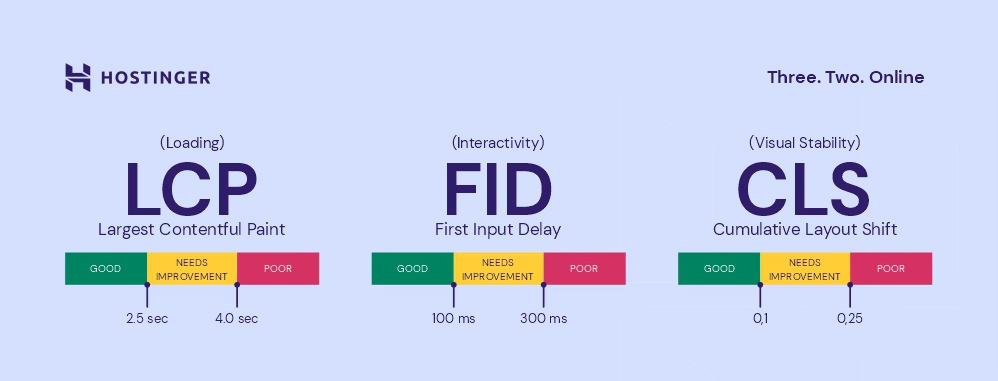

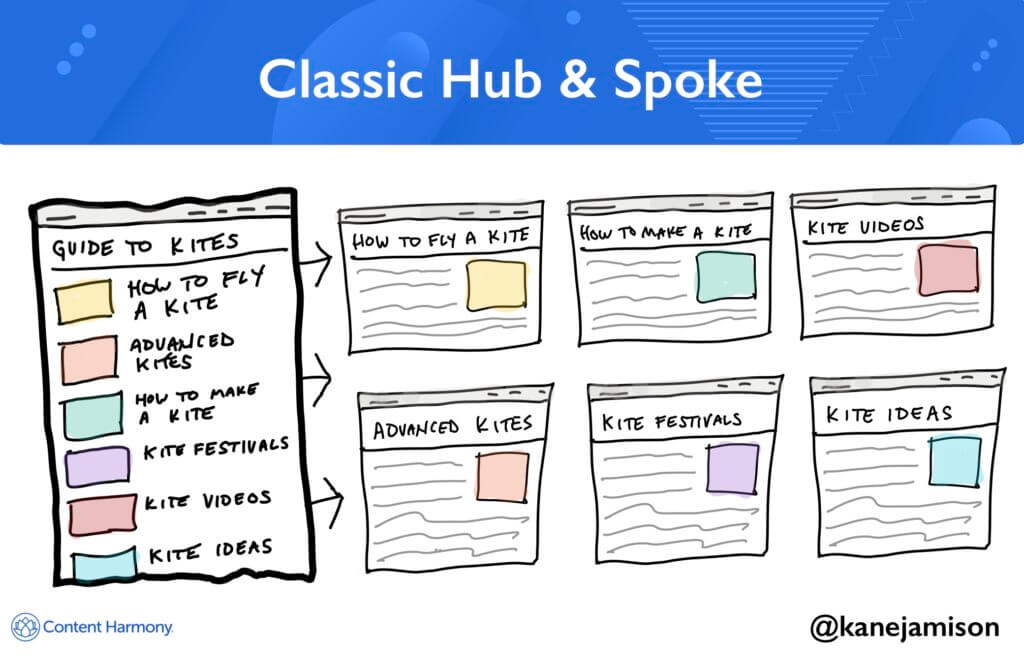


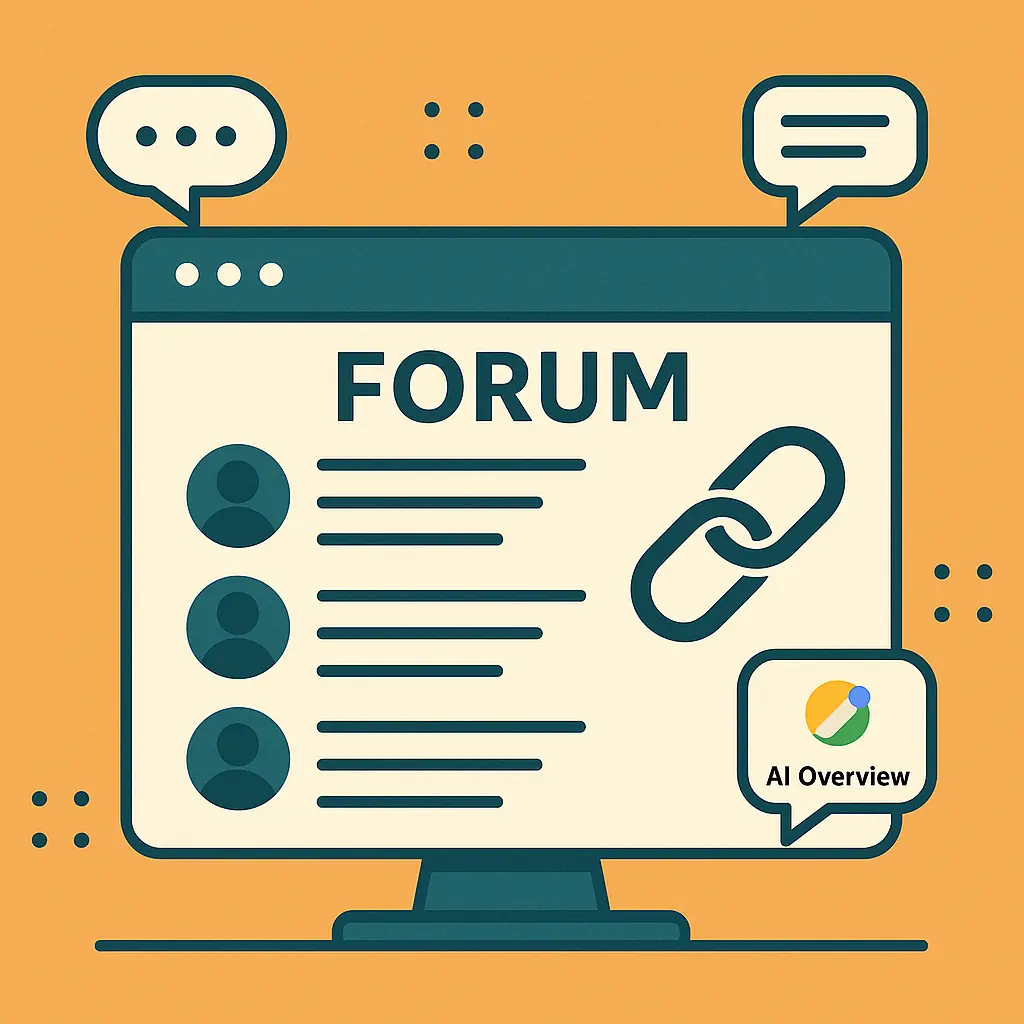

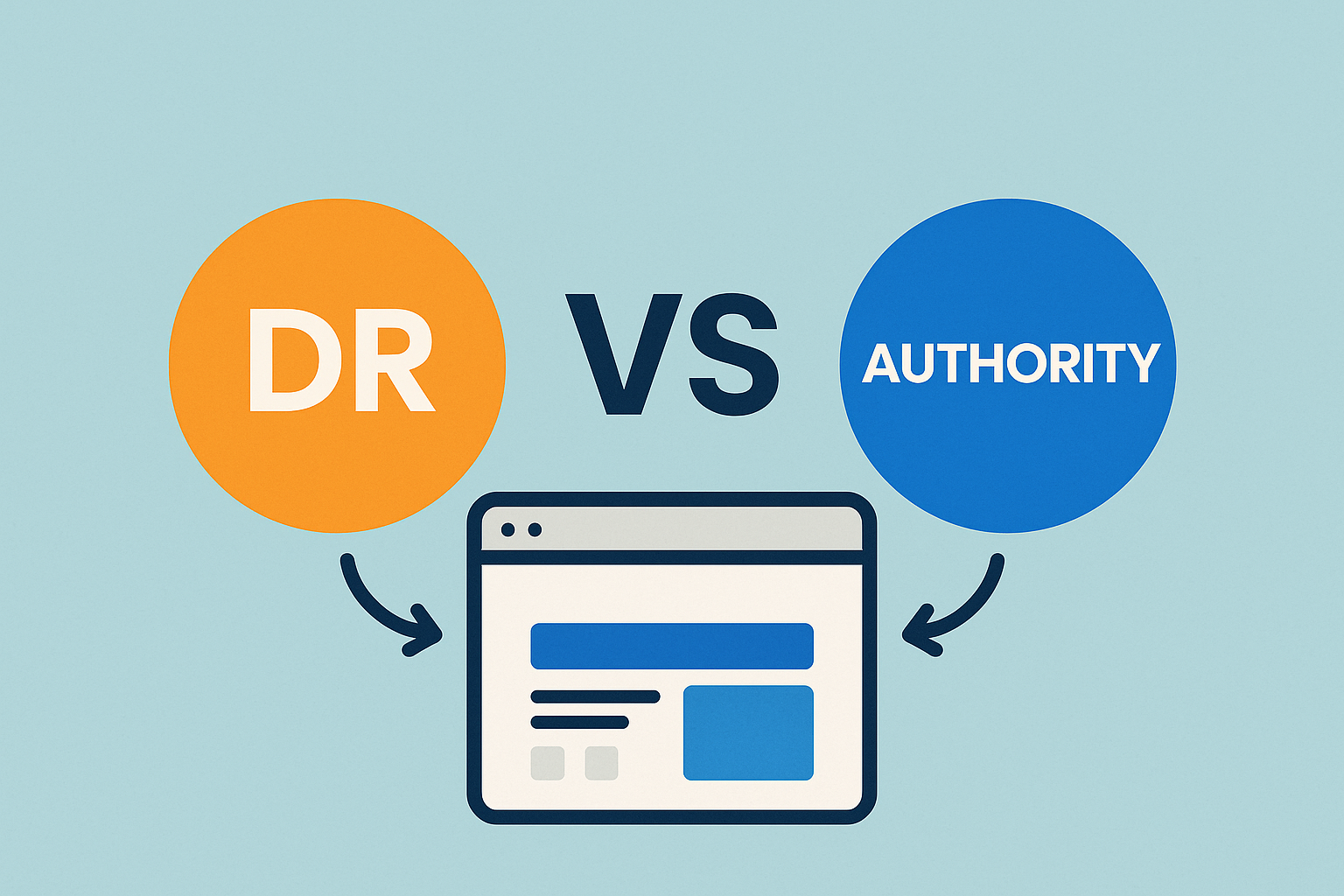
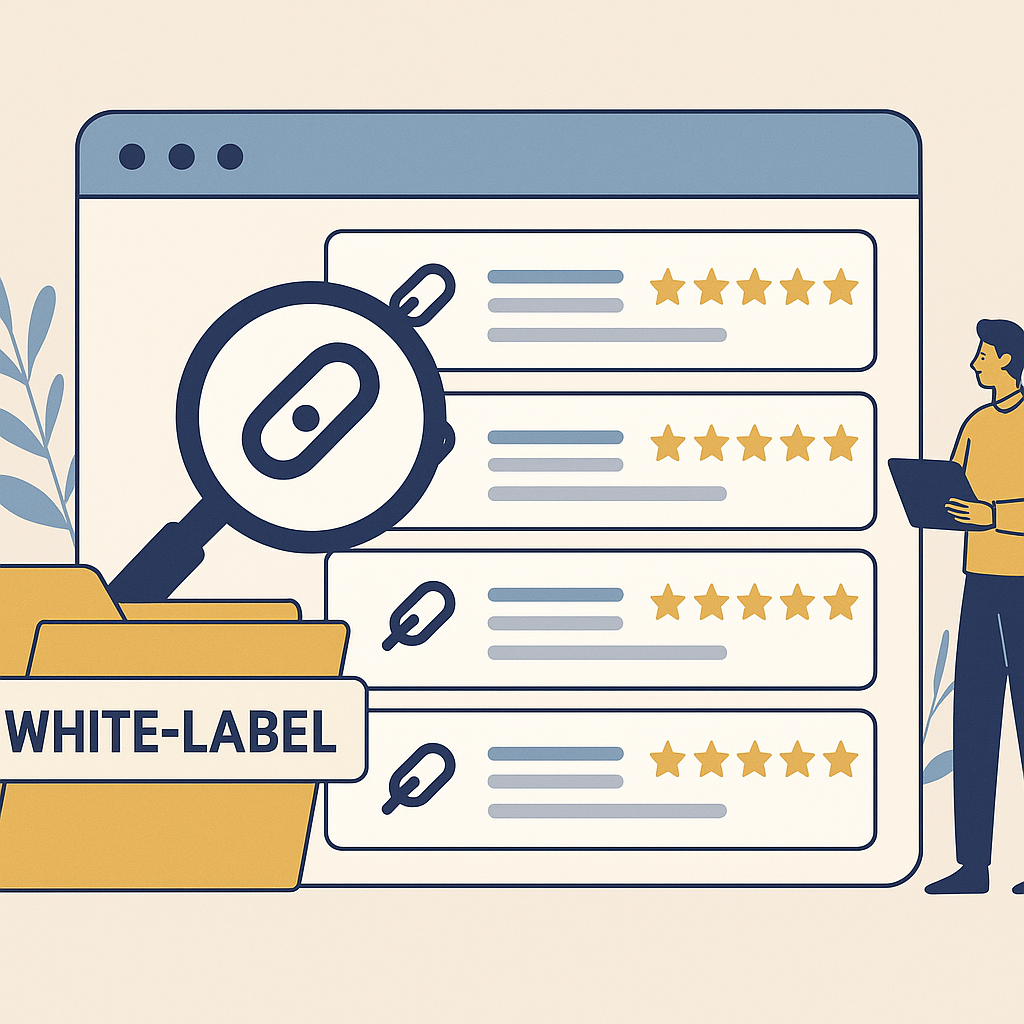


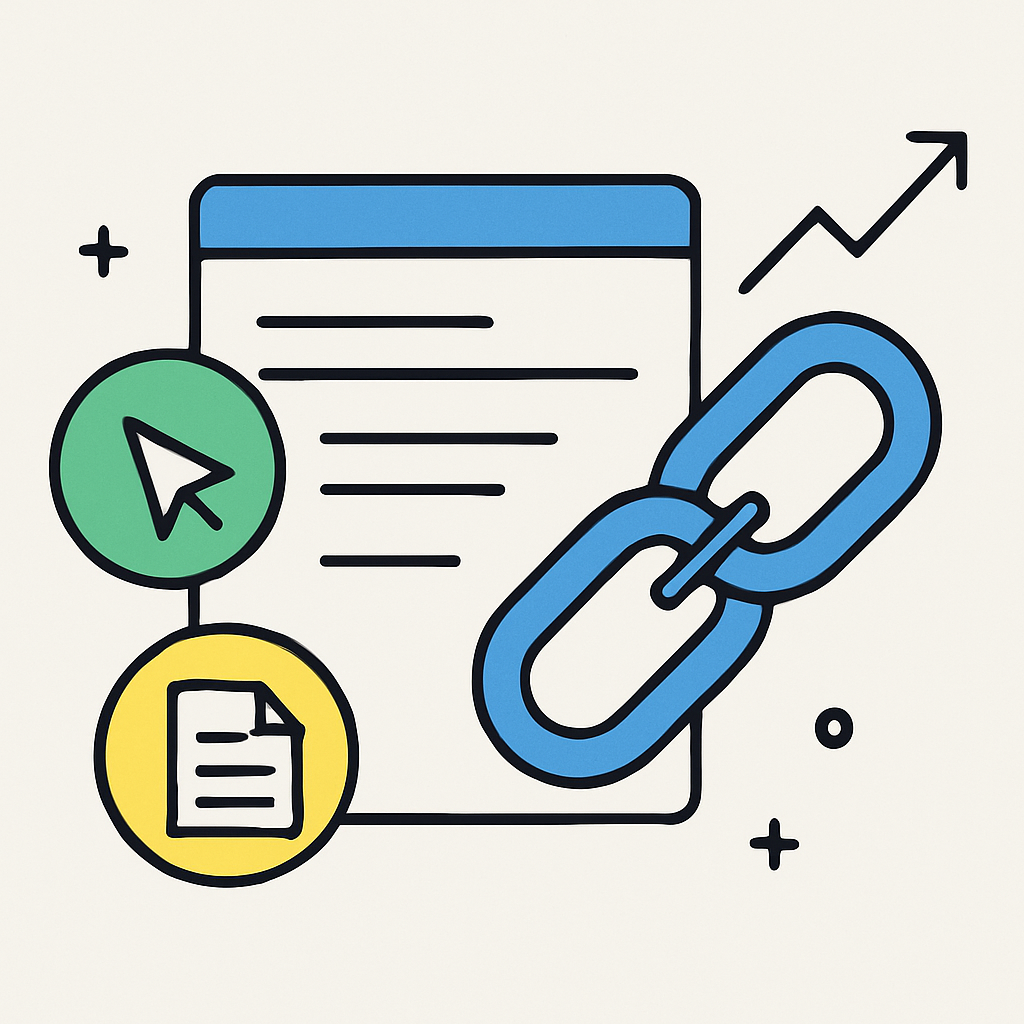


















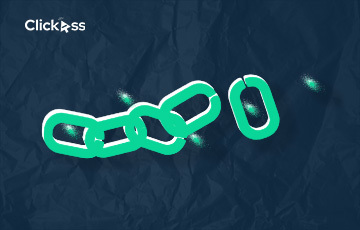


![Backlink Profile: Analysis + [2 Perfect Examples]](https://clickass.io/wp-content/uploads/2024/01/Examples-of-Perfect-Backlink-Profile3-1.webp)
